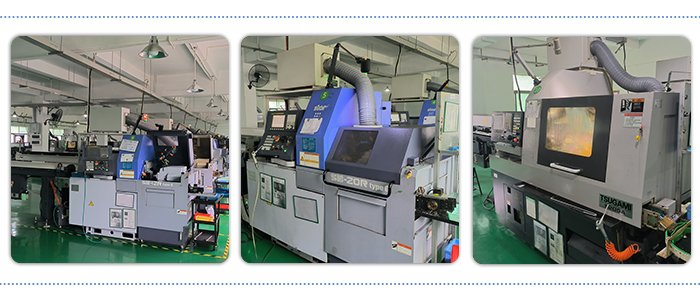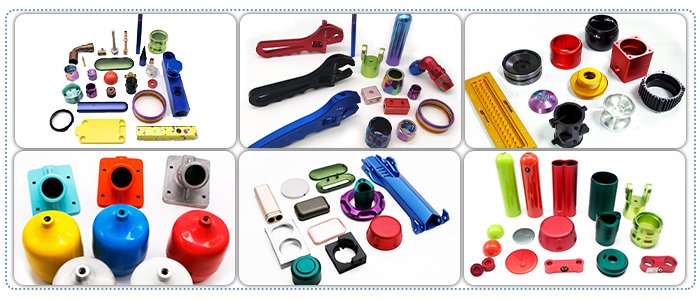When it comes to CNC machining for parts, many buyers initially focus on the basic cost per unit. However, if you’ve ever worked with a CNC machine shop, you might have encountered some hidden costs along the way. I’ve been in the CNC machining industry for several years now, and one of the most common questions I get asked by clients is: What additional fees should I expect?
Whether you’re commissioning a small batch of precision parts or sourcing thousands of components, understanding the breakdown of CNC machining costs is essential for budgeting. The upfront quote you receive may not always reflect the full picture, especially when you factor in tooling fees, shipping costs, and molding fees. In this article, I’ll explain these costs in detail, why they exist, and how you can manage or mitigate them.
1. CNC Machining Costs: What’s Included in the Price?
Before diving into additional costs, let’s quickly review what is typically included in the basic price of CNC machining. The core cost usually includes:
- Material Costs: The raw material used to manufacture your parts (e.g., aluminum, steel, plastic).
- Labor Costs: The time and expertise required to operate the CNC machine, program it, and manage the production process.
- Machine Time: The time it takes for the machine to fabricate your parts, often billed on an hourly basis.
While these are the main factors that affect your quote, the reality is that CNC machining often comes with some extra costs that can surprise even experienced buyers. Let’s explore these additional fees.
2. Tooling Fees: Why You Might Pay Extra
One of the most common hidden costs in CNC machining is tooling fees. But what exactly are tooling fees, and why do they add to your overall cost?
What Are Tooling Fees?
Tooling refers to the specialized tools, such as cutting bits, jigs, fixtures, and molds, required to produce your parts. These tools are often custom-designed for your specific project. CNC machines don’t use a “one-size-fits-all” tool, so the right tooling must be prepared for each unique design.
- Custom Tooling: For unique or complex parts, you may need specialized tools that are custom-made for the project.
- Tool Wear and Maintenance: CNC tools wear down over time and may need to be replaced during the production process.
How Tooling Fees Are Calculated
Tooling fees can vary significantly depending on the complexity of the part you need to produce. The more intricate the design, the more specialized the tools, and thus, the higher the tooling costs. Some factors that influence tooling fees include:
- Initial Tooling Setup: A one-time setup cost to create the necessary tools for production.
- Tool Replacement: If a tool wears out during the production process, the cost of replacing it is often passed on to the customer.
- Tooling Modifications: If the design changes or adjustments are needed, tooling may need to be modified or re-fabricated.
Pro Tip: If you’re working on a large production run, these costs can be spread across the total number of units, reducing the per-unit cost of tooling. For low-volume orders, however, tooling fees can significantly increase the price.
3. Shipping Costs: Getting Your Parts to You
Shipping is another crucial cost that can affect the overall price of CNC machining, especially if you are working with international suppliers or need expedited delivery.
Shipping Within the Same Country
For orders within the same country, shipping costs are often reasonable, depending on the weight, size, and distance between the manufacturer and the customer. However, even within the same country, if you’re ordering large or heavy parts, the shipping fees can add up.
- Freight Charges: For larger shipments, freight charges are often used, which can be more expensive than standard courier fees.
- Packaging Fees: Proper packaging is required to protect the parts during shipping, which may incur additional costs.
International Shipping Costs
When you’re working with international CNC machining companies, shipping becomes even more complex. The costs are generally much higher due to:
- Customs and Import Fees: International shipments often have customs fees, import duties, and taxes.
- Longer Shipping Times: If you need expedited shipping, especially for international orders, you’ll have to pay a premium for faster service.
- Packaging for International Transport: International shipping requires more robust packaging to withstand longer transit times and rough handling, adding extra fees.
How to Minimize Shipping Costs
- Negotiate with Your Supplier: Many suppliers offer discounted rates for bulk orders or long-term customers.
- Consolidate Shipments: If you have multiple parts or a series of orders, consolidating them into a single shipment can reduce costs.
- Work with Local CNC Shops: Whenever possible, try to source your parts from a local CNC machining factory to minimize both shipping costs and lead times.
4. Molding Fees: When Are They Applicable?
While not always applicable, molding fees are another potential additional cost to consider. Molding is typically used when you need to create parts in large quantities or when the part design involves complex features that would be challenging or expensive to machine directly.
What Are Molding Fees?
Molding is often associated with injection molding, die-casting, or compression molding, where molten material is injected into a mold to form parts. While this process is different from traditional CNC machining, it can be used for parts that need to be manufactured at high volumes. CNC machining can sometimes serve as a precursor to the molding process, especially for prototype parts.
Molding fees typically cover the cost of:
- Designing and Making Molds: Custom molds are often necessary for your parts, and the initial cost can be high.
- Mold Testing: Once the mold is made, it must be tested for accuracy and functionality. This can add significant costs if adjustments are needed.
When Are Molding Fees Used?
Molding fees are usually applied when you’re transitioning from prototyping to full-scale production and need to produce high volumes of parts. For example, if your CNC-machined prototype proves successful, you may opt for molding to achieve cost savings in larger batches.
Tip: If your project doesn’t require high-volume production, you may be able to avoid molding costs by sticking with CNC machining. However, if you’re producing thousands of parts, molding might be more cost-effective in the long run.
5. Setup and Programming Fees: The Hidden Costs of CNC Machining
Every CNC machining process begins with setup, which involves programming the machine, loading the tools, and performing trial runs to ensure the final product will meet specifications. These setup steps are typically billed separately, especially for complex or customized parts.
What Do Setup Fees Cover?
Setup fees cover the time it takes to prepare the machine for your specific project. These fees may include:
- Programming Costs: CNC machines are controlled by computer programs, and creating or modifying these programs takes time and expertise.
- Fixture Setup: Custom fixtures are often needed to hold parts in place during the machining process.
- Machine Calibration: The machine needs to be calibrated for each new part or batch of parts.
How Setup Fees Affect Pricing
Setup fees are usually higher for low-volume or custom CNC machining orders. However, as with tooling costs, they can be distributed over larger production runs, making them less impactful on a per-unit basis.
Pro Tip: If you’re ordering a large batch of parts, ask the CNC machining shop about discounts on setup fees for bulk orders or repeated production runs.
6. Final Thoughts: Managing CNC Machining Costs
Understanding the hidden costs in CNC machining is crucial to making informed decisions and budgeting properly for your projects. Whether it’s tooling fees, shipping costs, or molding fees, each additional cost can impact your bottom line.
Here are some strategies to help manage these costs:
- Negotiate Tooling and Setup Costs: If you’re working with a CNC machining factory for the first time, ask about reducing tooling and setup fees through long-term contracts or bulk orders.
- Consolidate Orders: Whenever possible, consolidate your orders to save on shipping fees.
- Choose Local Suppliers: Opting for a local CNC machining shop can save on shipping, customs, and import fees.
- Understand Volume Discounts: Many CNC machining providers offer lower prices for larger production runs. If you plan on ordering parts in bulk, ensure you get the best deal.
At YL-Machining, we’ve helped countless clients navigate the complexities of CNC machining costs. If you’re unsure about any aspect of pricing or need help estimating your project’s total cost, feel free to reach out. With the right strategy, you can ensure that your CNC machining project stays within budget while delivering high-quality results.
Remember, being informed about the total cost of CNC machining will help you make better decisions and avoid unexpected expenses. By considering all the potential fees—tooling, shipping, molding, setup—you’ll be in a better position to manage your project’s costs effectively.






